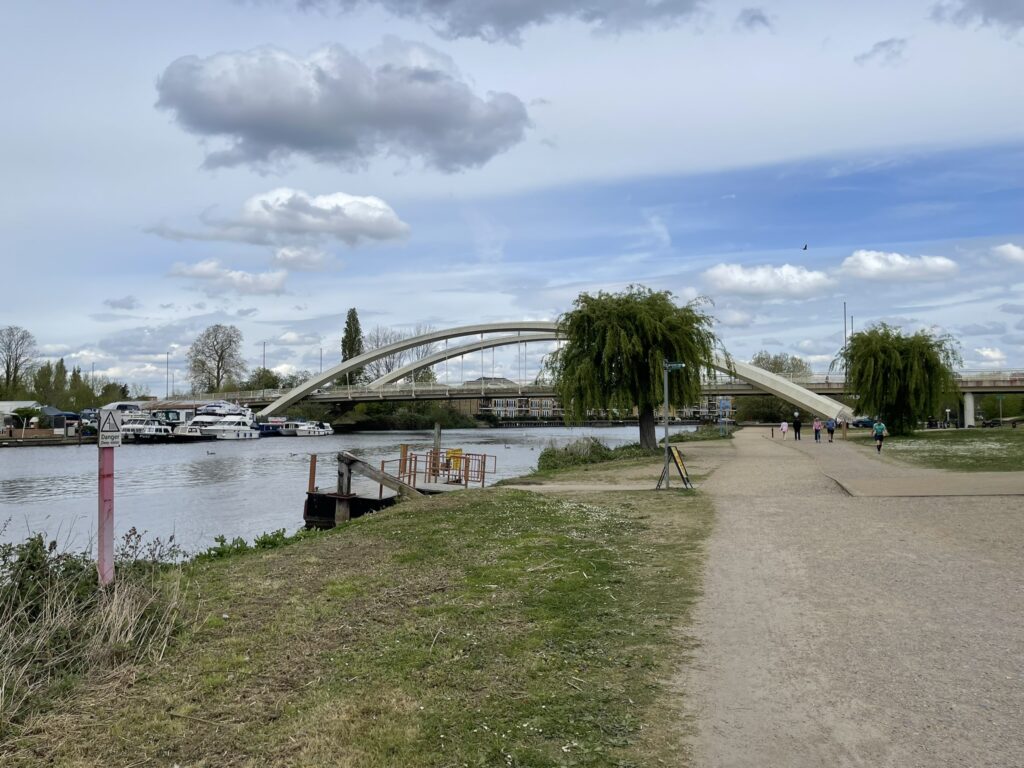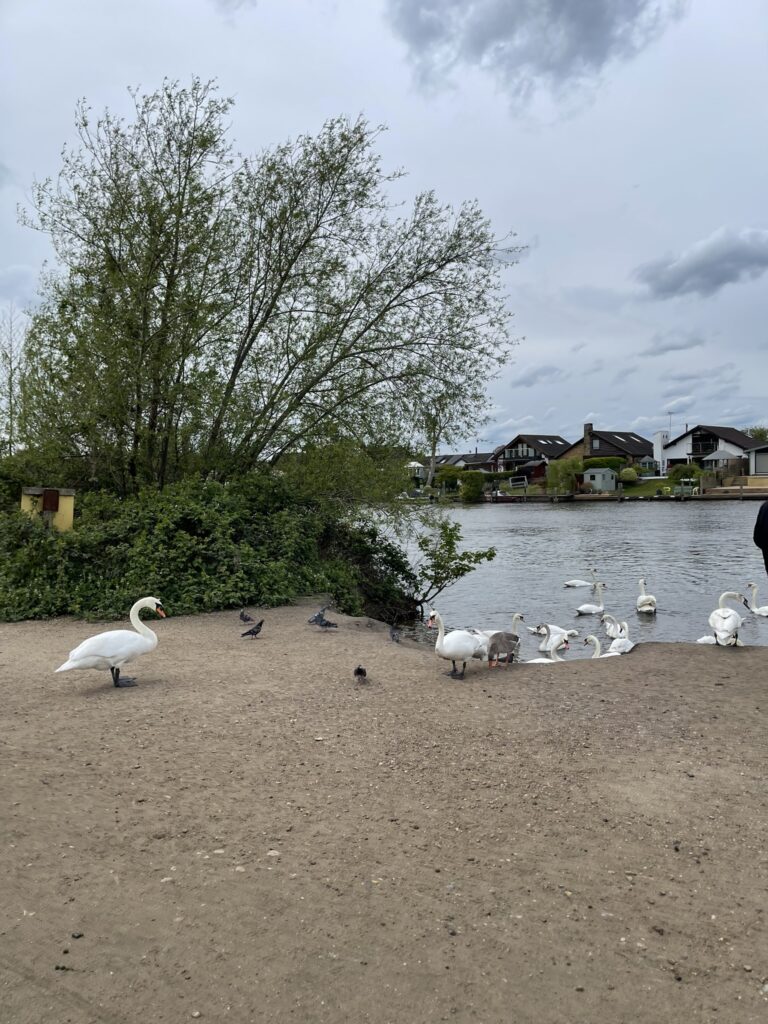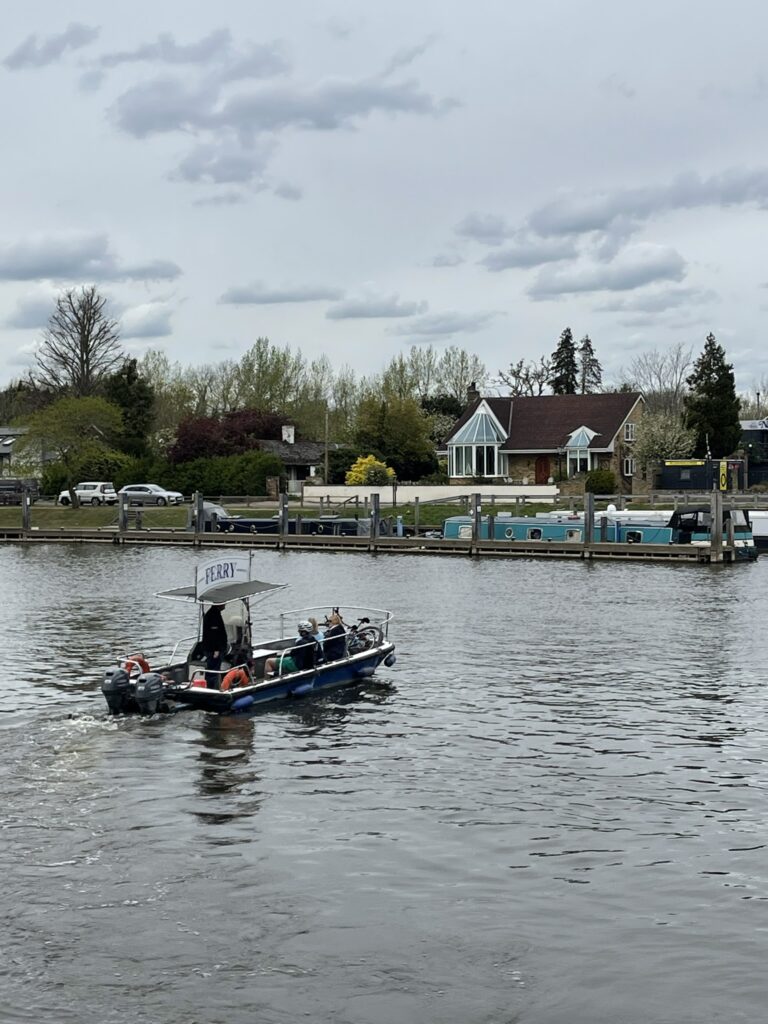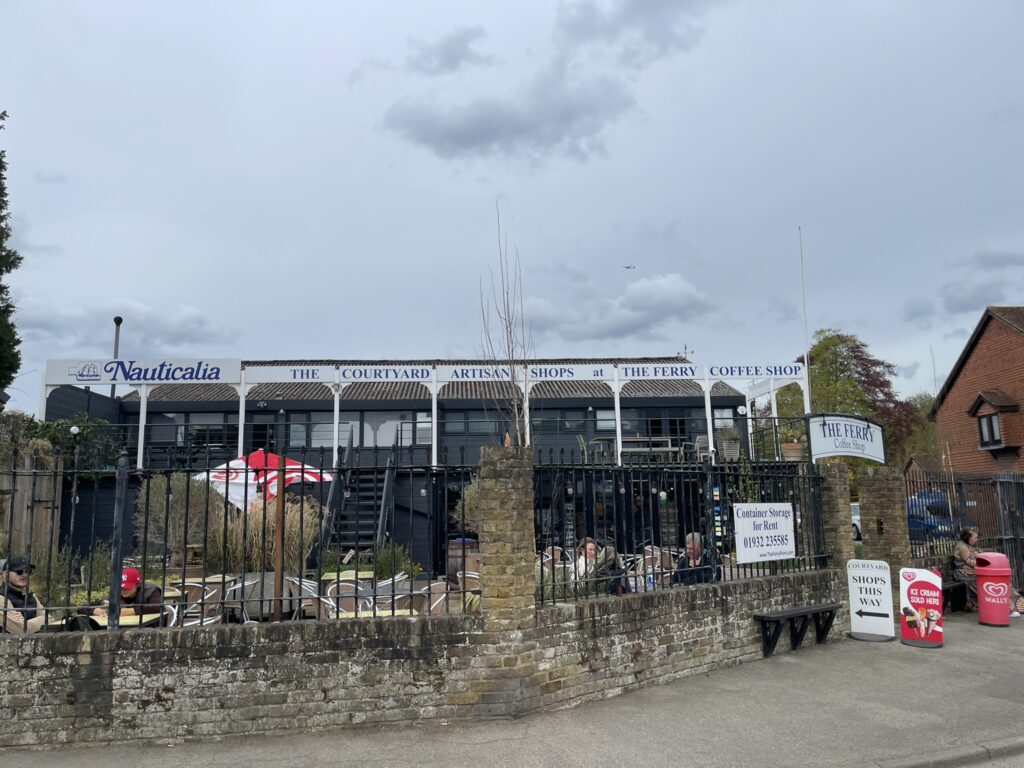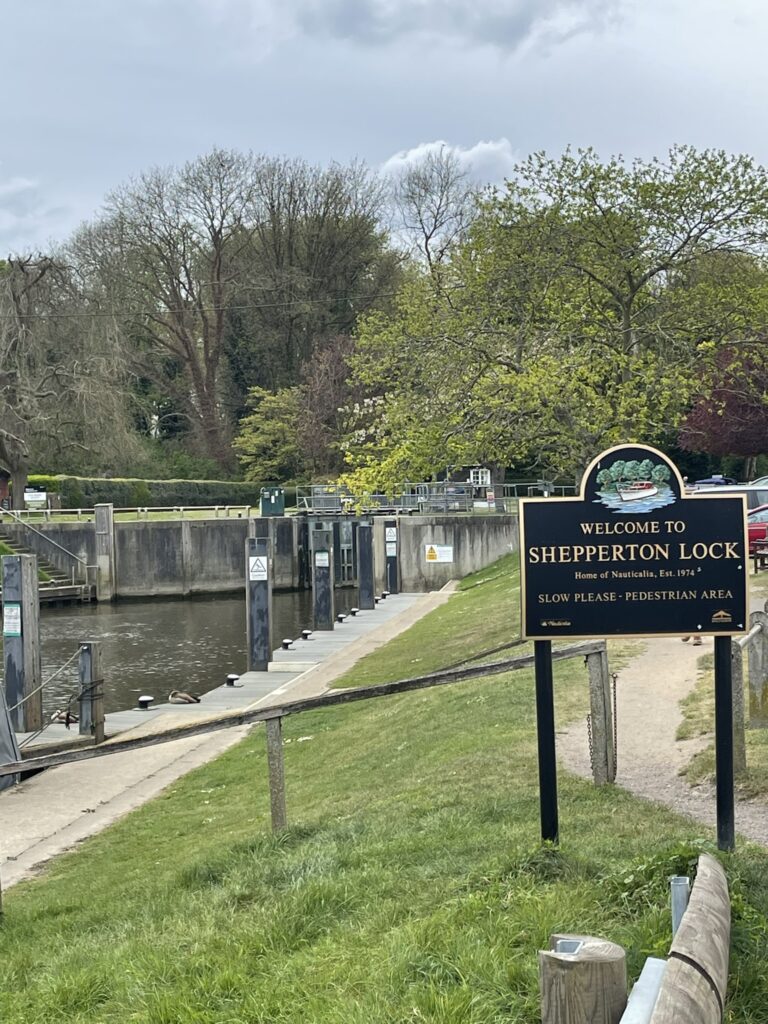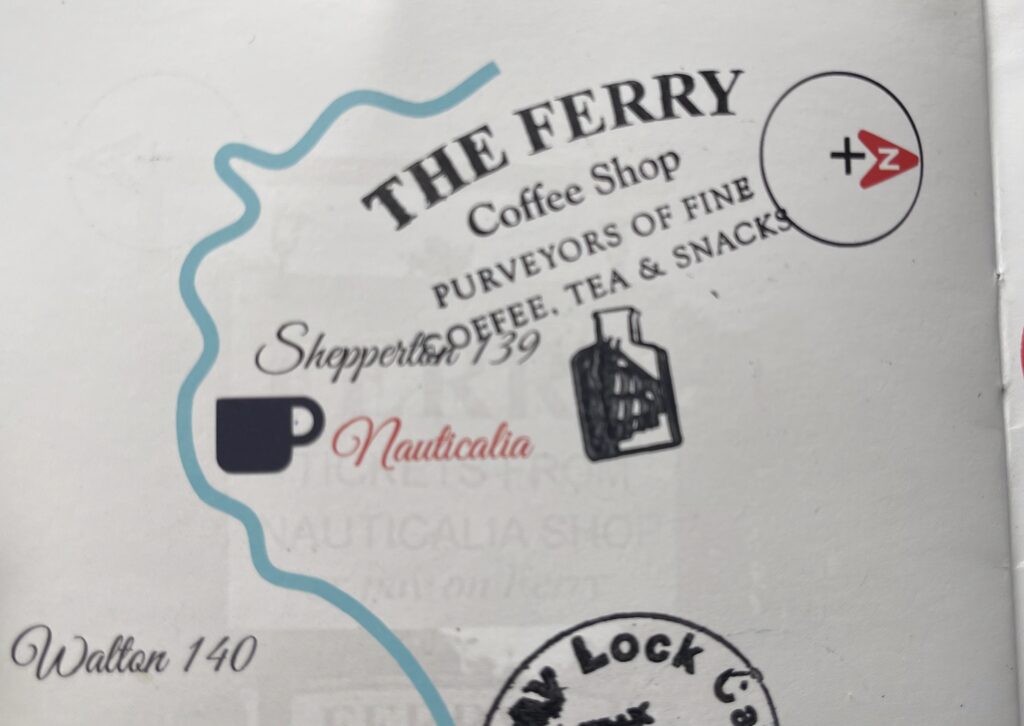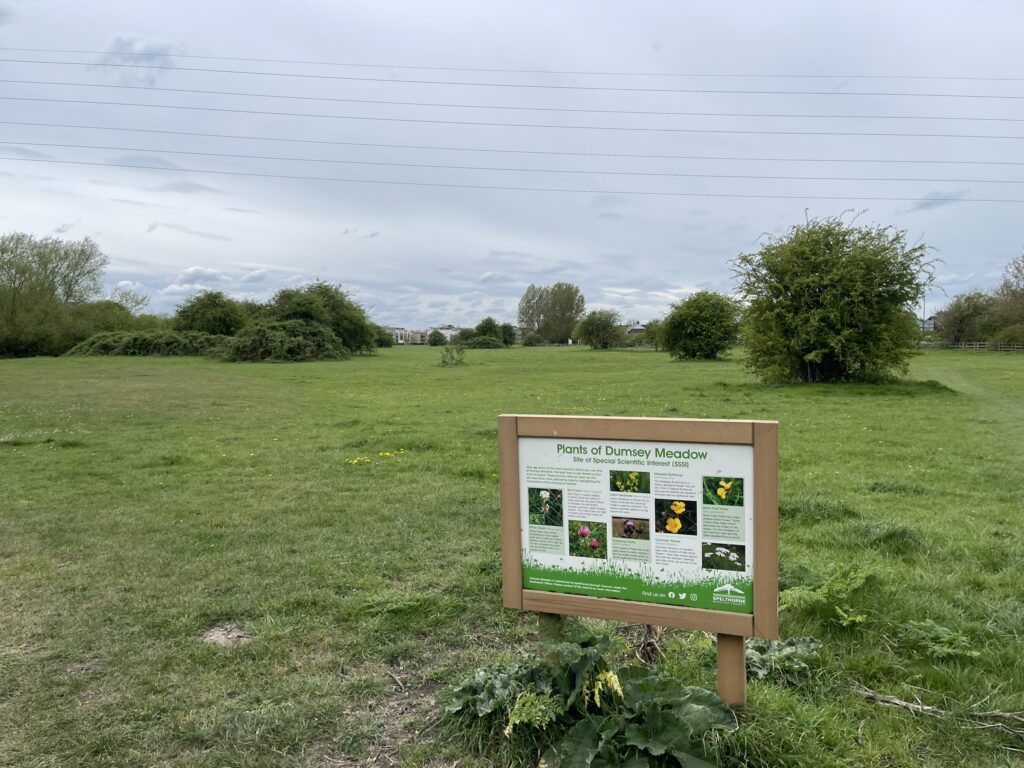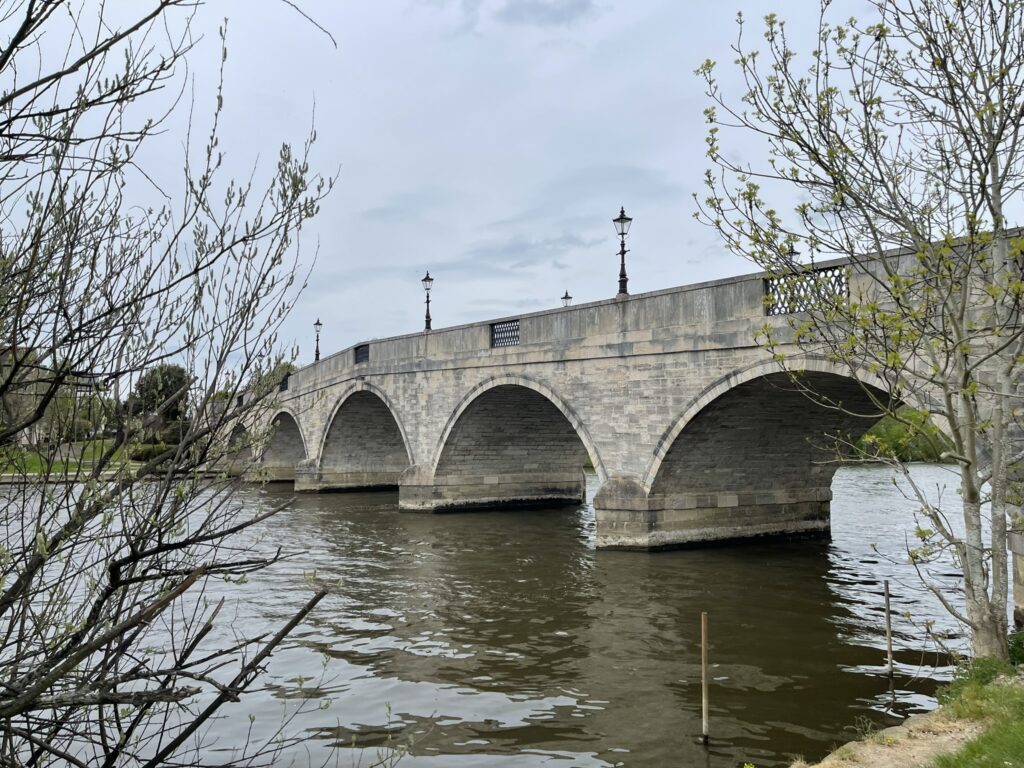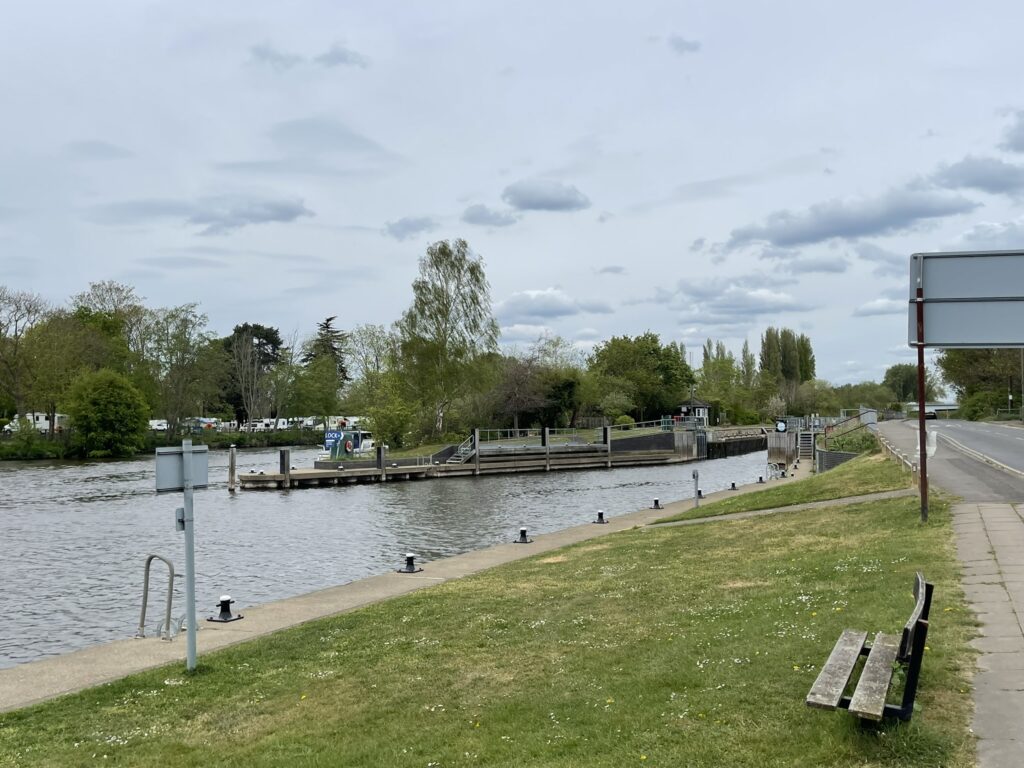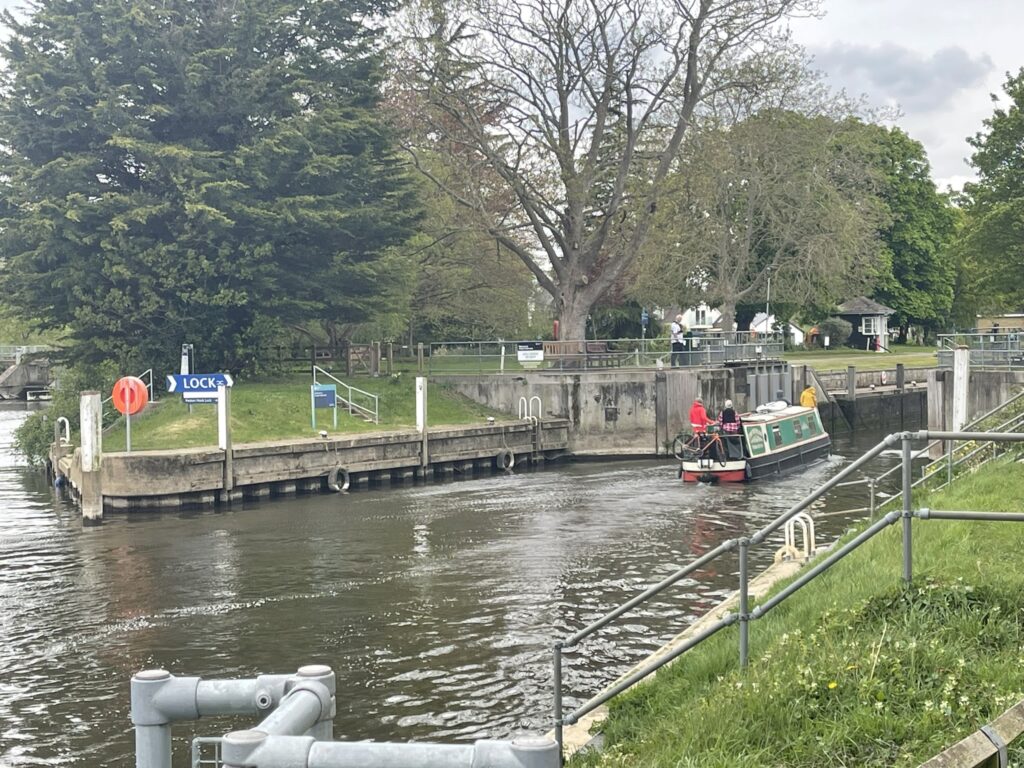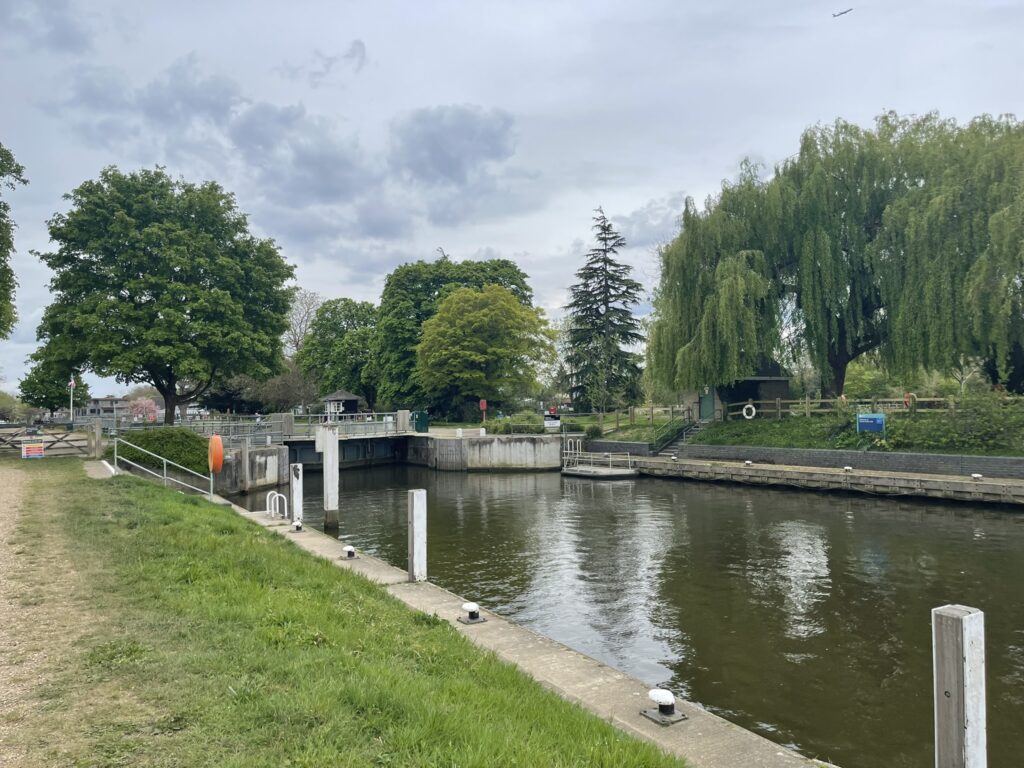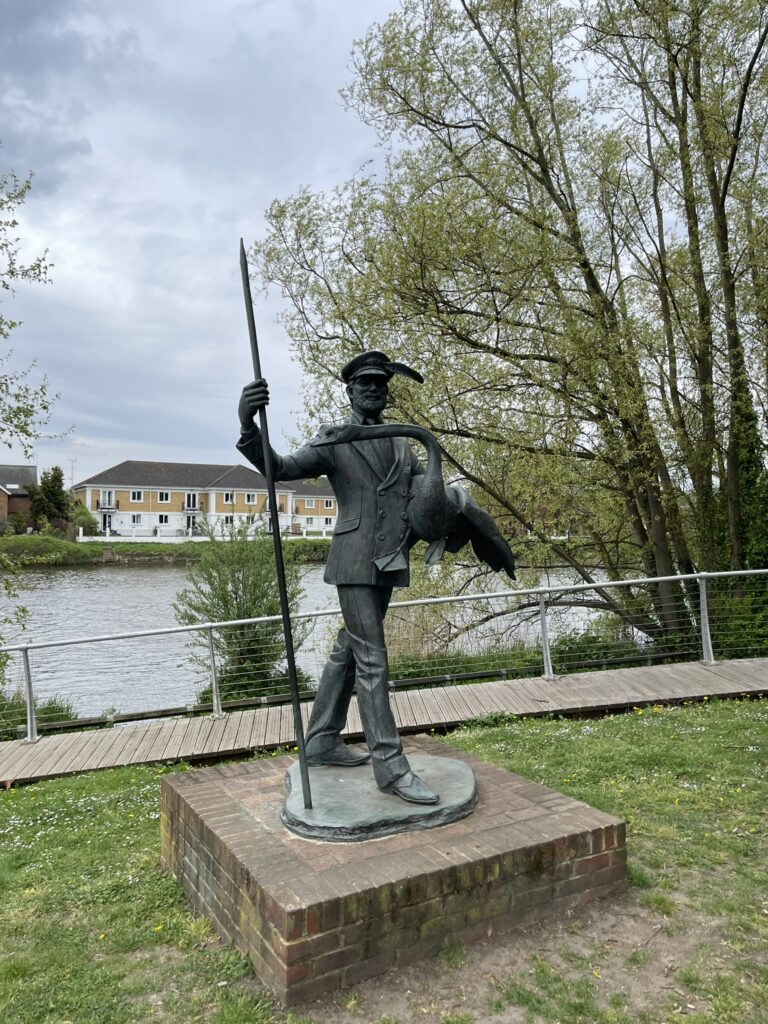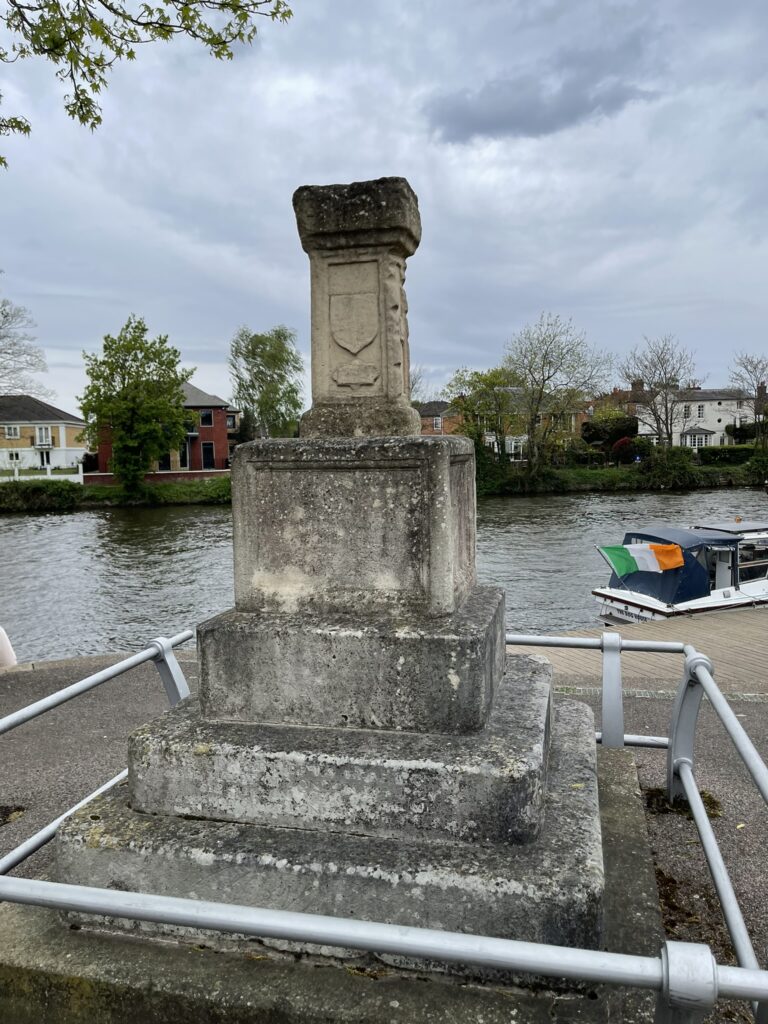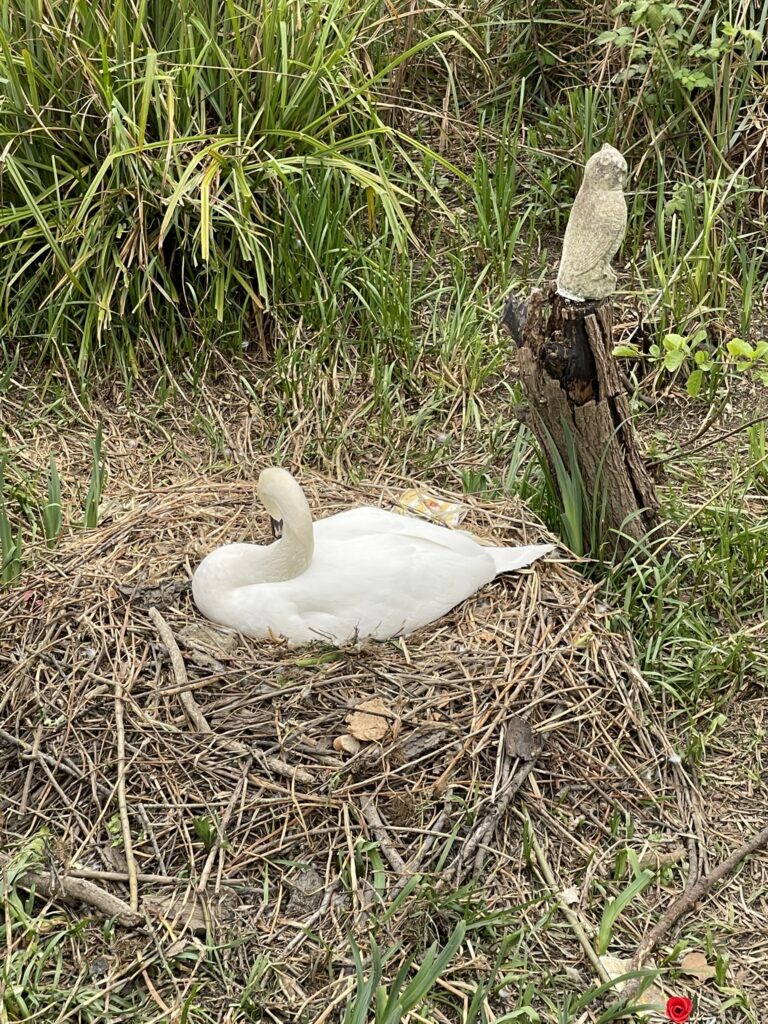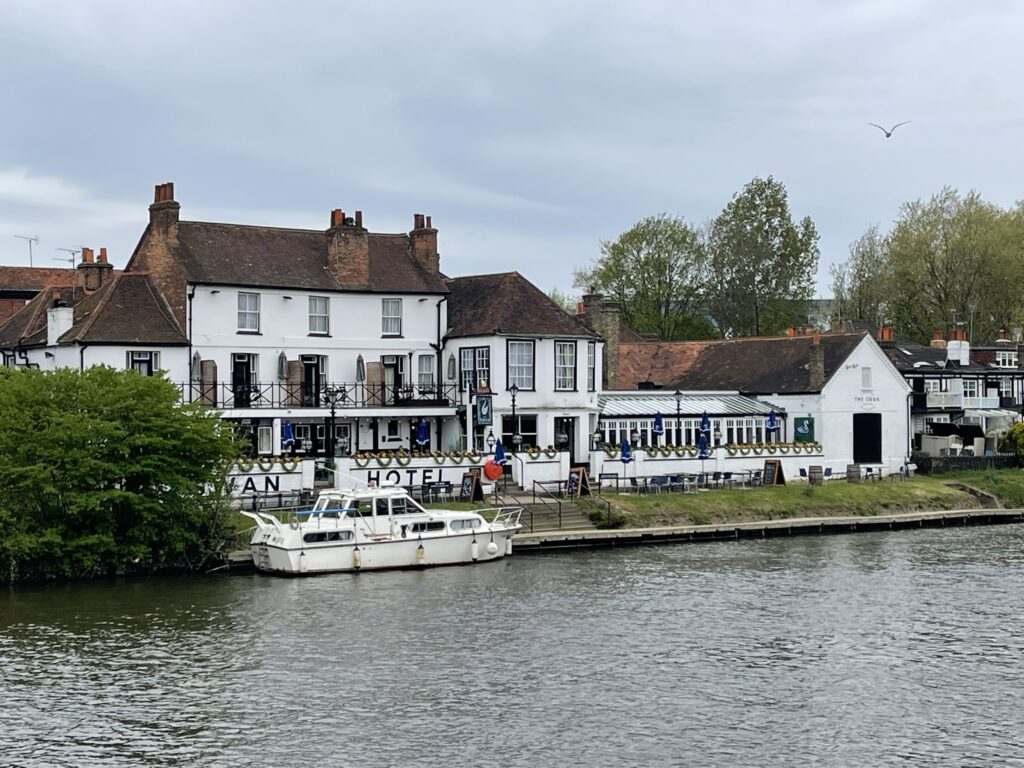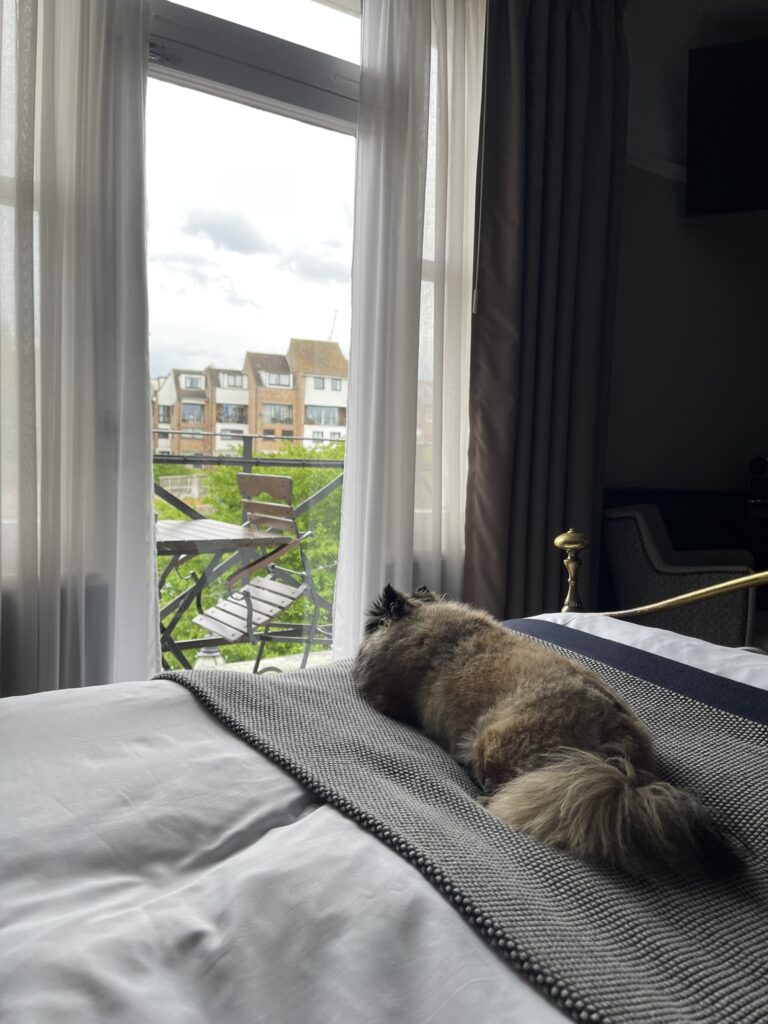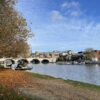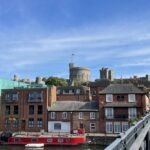Total Distance: 7.4 miles
Time: 4 hours
Points of Interest:
Walton Bridge
Shepperton to Weybridge Ferry
Ferry Coffee Shop
Shepperton Lock
Pharaoh’s Island
Dumsey Meadows
Chertsey Bridge
Chertsey Lock
Penton Hook Lock
Memorial Gardens, Staines
The Swan Master Statue
The London Stone
It’s been five months since my last walk, and finally the days are longer and the weather is improving. The extended Easter weekend allowed for a two-part trek: first, from Walton-on-Thames to Staines, with an overnight stay, followed by a continuation to Windsor the next day, totalling approximately 16 miles.
Backpack ready, we boarded the 11:12 train from Waterloo to Walton-on-Thames on Good Friday. Although the station is a considerable 30-minute walk from the Thames Path, the route is straightforward. The dry weather provided a welcome warm-up for our inaugural walk of the year (after navigating the correct station exit – a helpful tip: cross the bridge).
We soon arrived at Walton Bridge, the end point of our previous walk. With my tracker app running, we started along the path beside Walton Lane, carefully giving the local swans space to prevent Cher from pursuing them! Our initial point of interest was the Shepperton to Weybridge ferry crossing.
This crossing is the only ferry crossing along the Thames path, and it saw us arrive just as it departed. Fortunately, the crossing is brief, and a there was a mere 10-minute wait. A ferry has served this location for over five centuries and is currently operated by Nauticalia. It runs from 8:00 am to 5:30 pm on weekdays and 9:00 am to 5:30 pm on weekends, costing £3.50 for a single adult fare and £6.00 for a return.
The short five-minute ferry ride delivered us to The Ferry Coffee shop, where we enjoyed a light snack and a rest for our feet (and paws). I also sought another stamp for my Walk the Thames passport. A slight mix-up occurred with the younger staff, who initially stamped my passport with a loyalty card stamp. However, a more senior colleague soon rectified this with the official Walk the Thames stamp.
Refreshed, we resumed our walk along the towpath towards Shepperton Lock. Originally constructed as a timber pound lock in 1813, a new stone lock was built alongside it in 1899, after which the older chamber was filled. In 2012, The Environment Agency’s poll recognized the lock as the “best-kept lock” on the River Thames.
Further along the path, we reached Pharaoh’s Island, a gift to Admiral Nelson following his victory at the Battle of the Nile in 1798. This 920ft-long, 200ft-wide island once served as the naval hero’s fishing retreat but now features 23 luxurious properties, each with an Egyptian name.
Our next pause was at Dumsey Meadows, a 9.6-hectare (24-acre) biological Site of Special Scientific Interest. We relaxed on the grass, admiring the grand houses across the river.
To the west of the meadow stands the Grade II listed Chertsey Bridge. A timber bridge originally occupied this site in the early 15th century, later rebuilt in 1541. The current bridge, completed in 1785, is situated slightly upstream. Notably, Chertsey Bridge appears in Chapter XXXI of Charles Dickens’ 1838 novel, Oliver Twist.
Continuing along the path and passing under Chertsey Bridge, we approached Chertsey Lock. This lock is the fifth-lowest of the forty-four locks on the non-tidal section of the river. Opened in 1813, it was later lengthened in 1893.
Immediately after the lock, we passed beneath a rather unremarkable bridge carrying the M3 motorway.
Our route continued towards Laleham, a village boasting 25 listed buildings, including Laleham Abbey and Church Farmhouse. We took a break just outside Laleham Camping Club. I thought it best to give Cher a rest and pop her in her carrier before we continued.
Further along, we approached Penton Hook Lock, completed in 1815, two years after Chertsey Lock. Rebuilt in 1909, hydraulic operation was installed in 1965. At 266 ft (81 m), it is the third-longest lock on the river.
The path followed the gentle curve of the river, with Staines, our day’s destination, gradually appearing in the distance. As we walked through Memorial Gardens, we passed the statue of the Swan Master, relocated here in 2014. Royal Swan Upping is crucial for swan conservation, involving The King’s Swan Warden collecting data, assessing the health of young cygnets, and checking for injuries.
Also within the gardens is The London Stone, marking the former westernmost extent of the City of London’s jurisdiction over the Thames. The Lord Mayor of London made an annual visit to the stone by barge until 1857. The original stone now resides in old Staines Town Hall.
Finally, we reached our lodging for the night – The Swan hotel. As we approached, a swan was nesting nearby. The hotel is a 16th Century hotel now run by Fullers Pubs, and I was lucky enough to get a riverside view. The room was excellent – modern, comfortable, and with a fantastic view of the Thames. After checking in, I enjoyed a pint, and we both relaxed on the bed. In the evening, we went to the pub downstairs for a satisfying steak (essential for maintaining energy!) and a few more well-deserved pints. It was an early night, however, as Windsor awaited us the following day!

